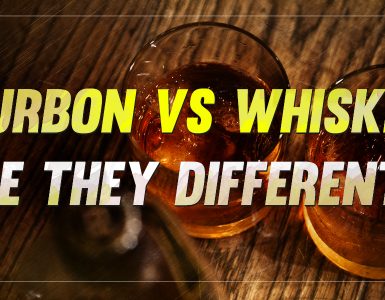What is Scotch?
Scotch is whisky made in Scotland. If we are to know what Scotch is, we have to first understand what whiskey actually is.
Let’s not make it too complicated. Simply put, whiskey is an alcoholic beverage distilled from fermented grain mash, which may or may not have been malted. All whiskey must be distilled at a minimum of 40% and a maximum of 94.8% alcohol by volume. The differences among the different kinds of whiskey is based mostly on the type of grain used for the mash.
The main difference between scotch and another whisky is geographic, but also ingredients.
Because all whiskey is made from fermented grain mash, Scotch is no exception. To be called Scotch, the spirit must be made from malted barley, with many scotches using nothing more than barley, water and yeast, although whole grains of other cereals as well as caramel colouring may be included. In making Scotch, no fermentation additives or short-cuts are permitted.
Finally, it isn’t Scotch unless it is made 100% in Scotland, from Scotland.
How did Scotch whiskey come about?
Scotch whisky evolved from a Scottish drink called uisge beatha, also known as aqua vitae, which means “water of life,” called such because of its healing properties. The drink was used as a treatment for all kinds of ailments, causing a warm calming sensation upon “treatment.”
The earliest recorded reference to the drink was in 1494, as documented in the Scottish Exchequer Rolls, which were records of royal income and expenditure. It said, “Eight bolls of malt given to Friar John Cor wherewith to make aqua vitae,” which is equivalent to about several hundred bottles of whisky in today’s standards.
In 1505, a monopoly over the manufacture of aqua vitae was granted to the Guild of Surgeon Barbers in Edinburgh. This reflects the drink’s perceived healing properties as well as the medicinal talents of the barbers at that time. It is not surprising, therefore, that Scotland’s King James IV was recorded to have purchased whisky from a local barber during his visit to Dundee in 1506.
Royalty and the clergy were not the only ones to enjoy whiskey, however. Towards the end of the 16th century, the farming community, whose staple crops were barley and oats, discovered that the distillation process was a good alternative to long-term storage, which was nearly impossible due to their cold, wet climate.
Scotch whisky distillation continued to grow for the next several centuries. It survived taxes, cumbersome government regulation and smuggling, and became a commercial industry in the 1700s.
The worldwide growth of the scotch industry was made possible by two events. First was the introduction in 1831 of the Coffey still, which helped produce whisky that was smoother, less intense and more drinkable. Second was the destruction of France’s wine and cognac industry by the Phylloxera bug in 1880.
Scotch comes in two basic types: Single and Blended.
Single malt means a Scotch whiskey produced from only water and malted barley at a single distillery by batch distillation in pot stills.
Single grain means a Scotch whiskey distilled at a single distillery but in addition to water and malted barley, may involve whole grains of other malted or unmalted cereals.
Blended malt means a blend of two or more single malt Scotch whiskies from different distilleries.
Blended grain means a blend of two or more single grain Scotch whiskies from different distilleries.
Blended Scotch whisky means a blend of one or more single malt Scotch whiskies with one or more single grain Scotch whiskies.
Which Scotch is perfect for you?
With the endless variety to choose from, finding the perfect Scotch for you may be take a lifetime. The “best Scotch” will always be an individual choice. Remember, your preference is as valid as anybody else’s. Nevertheless, there are some bottles which are consistently agreed upon to be exceptional.
Here are five exceptional single malt scotch whiskies according to whiskey experts:
Glen Grant 10 Year Old – Elegant, smooth, and very easy to drink. The packaging has changed but the stuff inside is as good as ever, fruity and floral and excellent for the money. A drop of water doesn’t hurt it, but if you like adding water to whiskey, the 12-year-old is the best for that.
Jura Tastival 2016 – The Tastival series is a limited edition run, and this year it’s a 51 per cent, triple-sherry finished, non-chill filtered dram. It’s all maple and raisins, sultanas and hazelnuts – in other words, it’s very Christmassy.
Royal Brackla 16 Year Old – It’s sherried, so a little sweet, but there’s a hint of smoke and spice in there, and a bit of cinnamon and ginger. It’s clean, but the kind of drink to celebrate with.
Old Pulteney Pentland Skerries – This one here is for those who like their whiskies sweeter. It tastes of caramel and toffee, and finishes long. It’s what you’d drink if you just want to end the night.
Ailsa Bay – It’s smoky, but it’s sweet smoke, with plenty of fresh citrus flavors too.
And here are five exceptional blended scotch whiskies that cater to a variety of tastes.
Johnnie Walker Blue Label – Presented in individually numbered bottles, it’s reminiscent of 19th century-style whiskies. It’s mellow with a dry smokiness mixing with raisin sweetness. It is best savored with the palate cleansed and cooled by iced water. One sip reveals a velvety mouth-feel, then an explosion of flavor.
Compass Box Great King Street Artist’s Blend –Designed for easy drinking, The Great King Street range has gotten almost everybody impressed, from new whisky drinkers and cocktail lovers to single malt fanatics. Artist’s blend is sweet and creamy on the nose with lots of cereal notes, an essence of vanilla, dried fruits and apple crumble.
Chivas Regal 18 Year Old –This indulgent whisky is a blend of over 20 of the finest single malts from around Scotland. The 18 year-old contains an above-average amount of malt, and its extended ageing period results in a beautifully balanced and smooth blend.
Hankey Bannister Heritage Blend –This heritage blend is the recreation of the 1920’s style of Scotch for the modern times. It’s peatier and much sweeter than their usual blend, and provides a fascinating awareness into how this popular whisky has transformed over the last 90 years.
Compass Box Hedonism – This blend is supple, silky and elegant, and just as gratifying as the name suggests.
Becoming a Scotch drinker takes a little work and a bit of tongue maturity. The very first sip of this historic elixir will take you aback with its overt potency. But on your second or third time, you will slowly begin to get a sense of what makes Scotch so appealing and pleasurable.
Oh, and if you happen to be in Scotland and you want to order whiskey, never call it Scotch. There, they call it ‘whiskey’ when it’s blended and ‘malt’ when it’s single-malt. And never, ever order it with Coke.
















